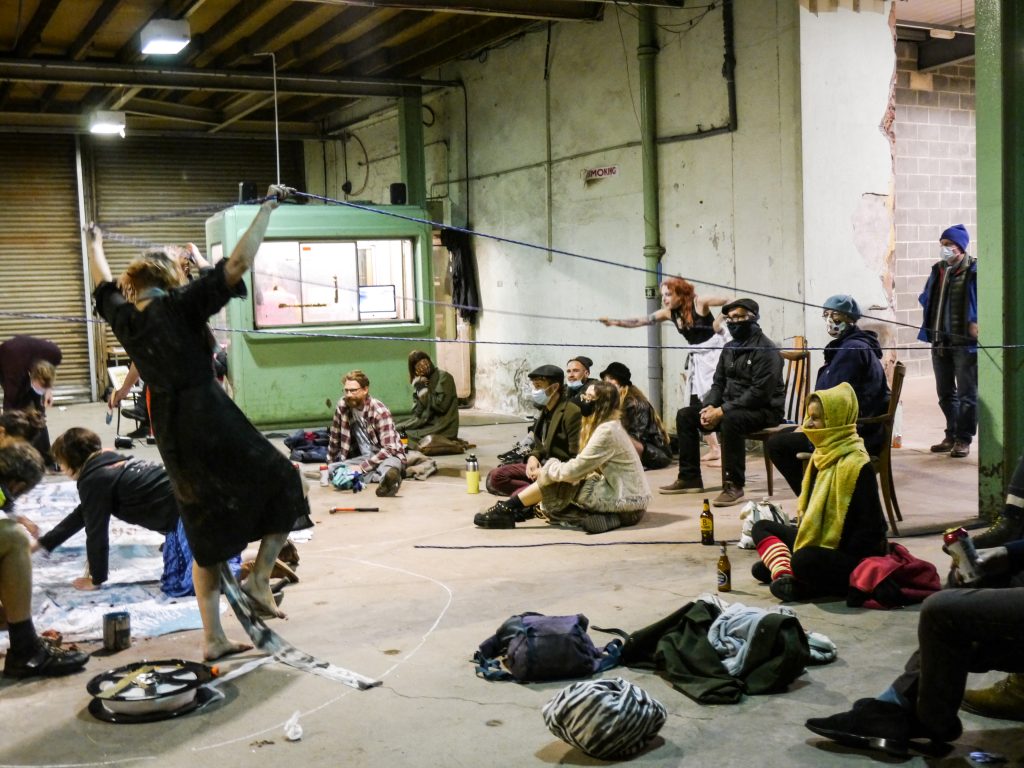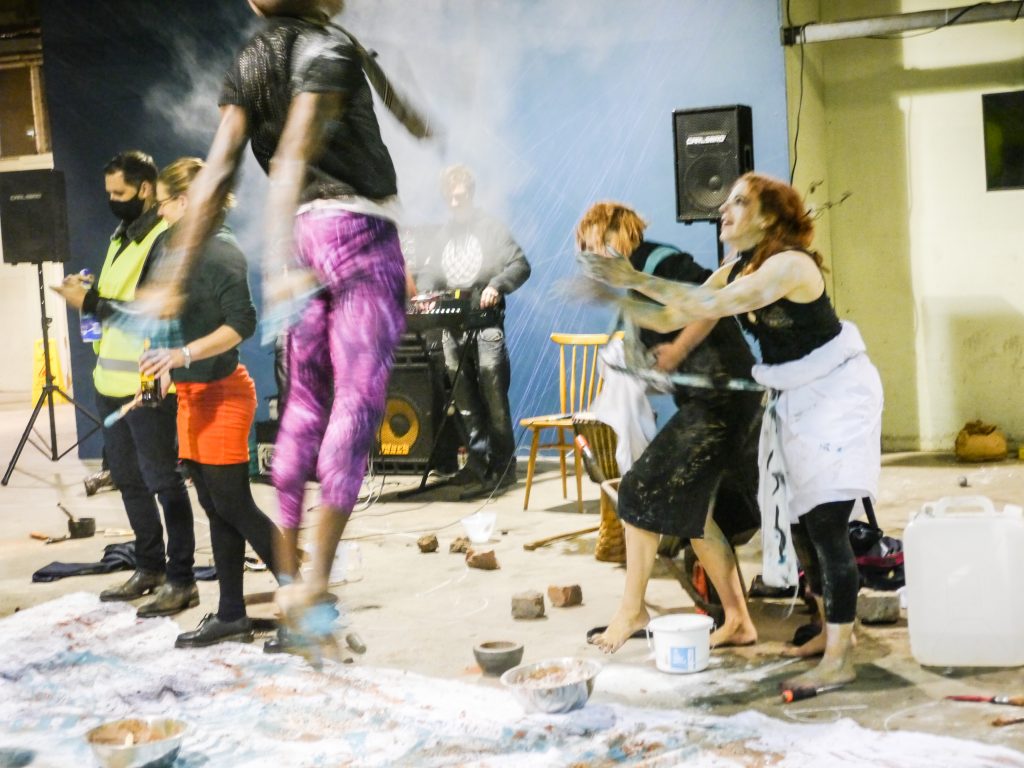There’s been something problematic for me about calling myself a performance artist and with the idea of performing in general. It’s true to say that my work fits into the genre but in more recent years I’ve shifted towards the term Social Practice Artist. To do away with genres and labels altogether would be even more welcoming. However, explaining that I am ‘an artist who doesn’t sell art’, ‘I’m a bit like an art therapist but I’m not trained as a therapist’, ‘I create spaces for individual or community transition’ or ‘I work with temporary materials so I/we can respond to the moment we are presented with’; often kill a conversation or make me sound like I’m a bit lofty and ‘up myself”!

In fact, I would say my journey towards Social Practice didn’t begin as my journey at all. I was bought up in a faith community where you were taught that you were part of a whole ‘body’ of people – people with different ‘gifts’ to bring for the good of all. For all that was unwelcoming about being raised in this type of environment (which led to me coming out of it 20 yrs ago); it underpins my whole perspective on life and work – nothing I bring to the table makes sense unless it brings value beyond myself and that value is one vital ingredient in the meal that feeds us all. Whether I am working on a community mapping project, a schools project or a more divergent performance piece; what engages me the most is the interconnection and symbiosis of community.
As you will see if you read my previous blogs I now see ‘community’ reaching beyond a human-centric perspective – that I am part of something far less contained. Identifying with variants and edge-places, diversity of species, human diversity and our connected existence. So when I’m approaching a piece of work I am always looking at drawing in the voices and play-fullness of the audience and the immediate environment…even if that environment is a building.
In Novemenber last year, I joined Bristol Artsit Led Forum as part of a month-long artist take-over of a vast city centre building, Soapworks, for https://www.centreofgravity.uk Along with 60 other artists we populated the oldest parts of the ex-department store, (previously as the name suggests, a soap factory) and filled the hours with socially engaged work and a programme of events. This was quite feat in the middle of a pandemic but, with many a risk assessment, we managed to create a safe environment to share art that spoke from the times we are in and that asked for a response from the public about what sort of world we wanted to create for ourselves when we came out the otherside (whatever that would look like).

There is much to say about the impact of the exhibition as a whole on visitors and on us as artists. One of the most profound experiences for me personally was producing and performing in what turned out to be a powerful collaborative immersive performance with an audience of 30 – Don’t Clench. Working with two performance artists, Lisa Friedberg and Manu Maunganidze we drew together this piece, not through endless planning and conversations but through playing in the space.
We met together once to plan materials and work out our intention and then again for a few hours just to play in and respond to the building itself. We invited a filmmaker to document our journey as we rampaged around the massive empty basement of the former department store and the older part of the building that used to be the delivery bay. Using only materials that related to the building and concepts that related to its former use – we pounded down found bricks in to dust for paint, responded to old department store signs and brushed the floors with old brooms whilst remembering conversations we had overheard between customers. We teased out strands that we wanted to explore – the absurdity of our aspirations to own, make beautiful and progress forward; the precarious future of the empty building whose redevelopment hung in the balance due to the pandemic; our reluctance to truly transform in a way which brings us wellbeing individually and collectively; the fear we have of the liminal experiences of change…where are we heading?

When it came to performance night we occupied the belly of the delivery bay. It became a double-term; nodding not only to the delivery of goods to the store but delivery of the new world we are all moving towards. The bay became a delivery ward, for the birth of a brick – the symbol of what we are building our future to look like. The mother of the new ‘child brick’ was the previous caretaker who knew every inch of that building, from what lay beneath the floors to what lay behind the façade of the displays. The father of the ‘brick child’ was a man possessed with home furnishing and progress. He tried hard to draw the audience into his obsessions as they got their hands dirty with breaking down the bricks to make his progressive wall paint to the beat of his drum. Despite the mischief of the nymph of progress who tried to keep control; the whole process (aided by a wall of sounds) broke down as progress became threatened and the only viable way forward was to crawl into your home-furnishing curtains, roll into a chrysalis and prepare for radical transformation.

‘Don’t Clench’ – whether you like it or not change is here to stay…we’d better free ourselves up.

Another story is possible. But the persistence of the anthropocentric gaze, the reprise of language’s triumph, is not what excites me. What excites me is what happens when we encounter that which cannot be said, or mapped, or represented in concepts, or reflected upon, or owned: the orgasmic gasp of the inhuman. The space between words. There must be life outside story, beyond overarching contexts, tyrannical sentences and rude figures of speech. Beyond justice claims, settled scores, and arrivals. What adventures have stones, strewn across lithic landscapes, denuded of their vitality by narrative and voice? What pulsing mysteries are enfolded in the yearning lust of a lightning bolt? What empires and dynasties congeal and dissipate in the curdling crowds of spilled milk? What succour has tree and sky? What is the pollination song of fields? What languages do mountains speak with when the sun yawns to sleep? How does one consider the leviathan? The material world matters – not because it fits in story. The slime trail of a slug is the cosmic arc of justice.
Bayo Akomolafe